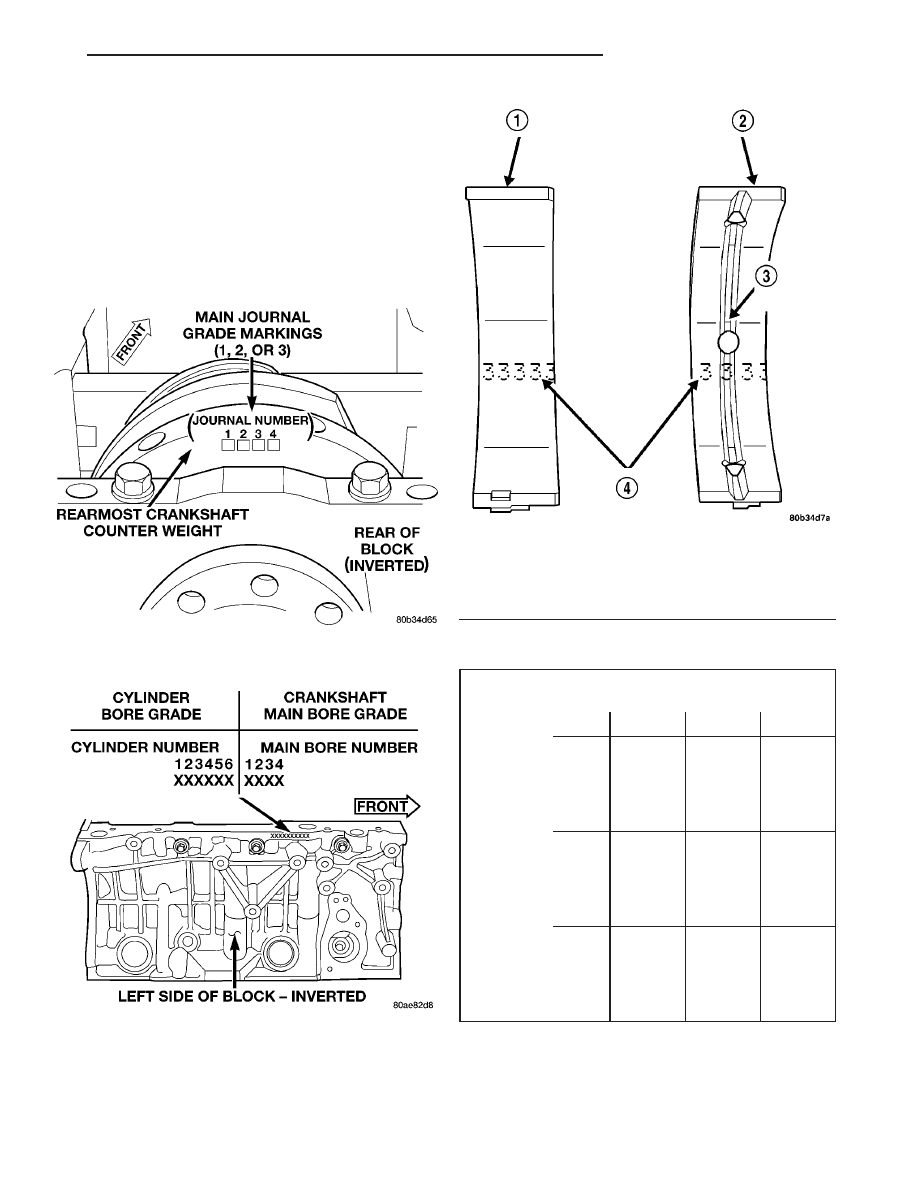Chrysler Sebring, Stratus sedan, Sebring Convertible. Manual - part 524

NOTE: Service main bearings have a number from
1–5 marked in ink on the bearing surface (Fig. 60).
For verification, use the MAIN BEARING SELEC-
TION CHART—2.7L for number to size identification.
The upper main bearing has a oil feed hole and a
center groove to allow lubrication of the main journal
and must be properly positioned in the block.
NOTE: Although cylinder bores are graded for size,
there is only one piston size.
MAIN BEARING SELECTION CHART—2.7L
Main Bearing Bore Grade
Mark
1
2
3
Crankshaft
Main
Journal
Grade
Mark
1
(3)
standard
(2)
+0.003
mm
(+0.0002
in.)
(1)
+0.006
mm
(+0.0003
in.)
2
(4)
-0.003
mm
(-
0.0002)
(3)
standard
(2)
+0.003
mm
(+0.0002
in.)
3
(5)
-0.006
mm
(-0.0003
in.)
(4)
-0.003
mm
(-0.0002
in.)
(3)
standard
Fig. 58 Crankshaft Main Journal Grade Marking
Location
Fig. 59 Cylinder Block Main Bore Grade Marking
Fig. 60 Main Bearing Grade Marks
1 - LOWER MAIN BEARING
2 - UPPER MAIN BEARING
3 - OIL FEED HOLE AND GROOVE
4 - GRADE SELECTION INK MARKS
JR
ENGINE 2.7L DOHC
9 - 199
CRANKSHAFT MAIN BEARINGS (Continued)